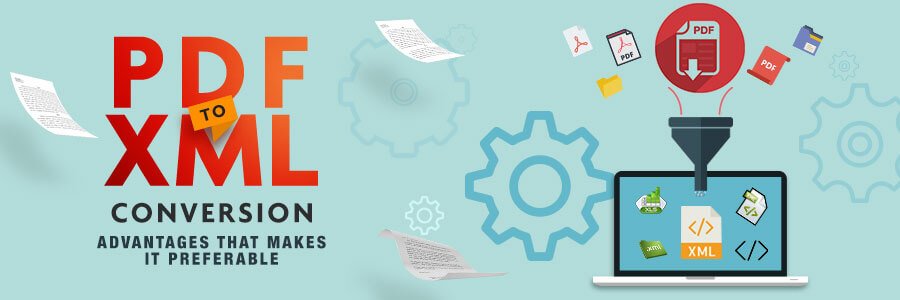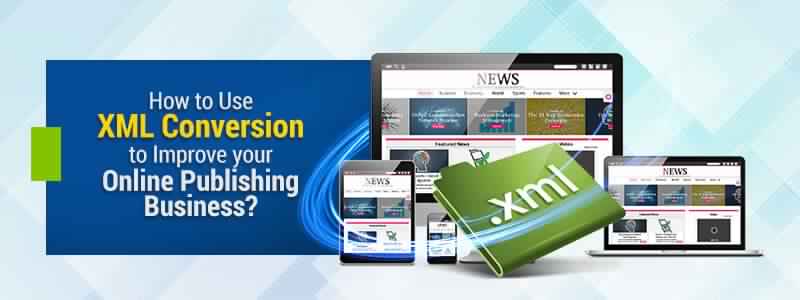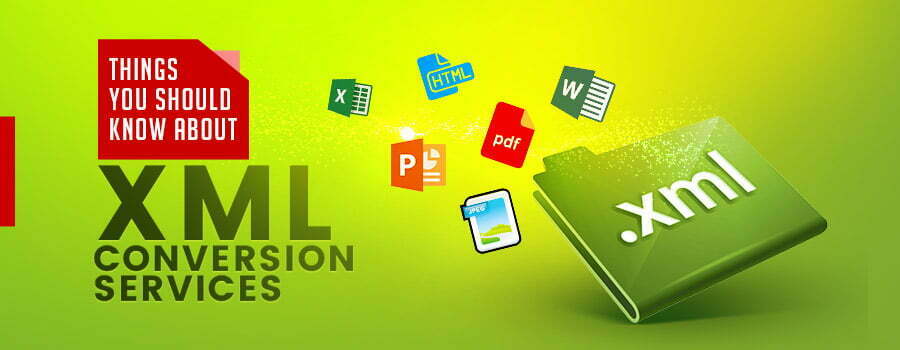With the world becoming fully digitized, there has been a radical change in the business domain to digitize various forms of data. Organizations now need to be compatible enough to access a variety of file formats and not just PDF. The same requires the implementation of various conversion techniques that are cost-effective as well as reliable. Information that is tailored to suit financial modelers or spreadsheets also needs to be converted, which can be done with the help of the conversion tools. Many institutions, such as loan and credit processing, deals with a variety of data. In that case, the XML conversion is really useful. For example, let’s say you want to do a routine check to see if some customers are default on the credit. For this, you need to collect the data in both digital and canned form, and that can be easily retrieved if the data are present in XML format.
Conversion of PDF into XML format is advantageous and proves to be very economical when it comes to storing the data in several formats and a number of locations. In general, there are few tips which can help to increase productivity when the files are converted into an Extensible format. Besides, it may also prove useful for companies that need to incorporate various business segments and are facing stiff competition. The PDF to XML conversion is a simple process which when assisted by professional hands is a no brainer. It is just the art of converting plaint text and documents, especially media into a format which is more efficient and reliable. In this article, we will help you to understand the advantages of converting the PDF documents into XML so that you can decide whether it will be profitable for your needs or not.
What is a PDF document?
PDF stands for Portable Document Format and is a file with .pdf extension. It was introduced by Adobe in the year 1990 to distribute read-only documents while preserving the layout of the page. The information present in the documents can be either in the form of texts, fonts, raster images, vector graphics, etc. Apart from this, the files may also contain layers, rich media including video content, logical structuring elements, 3D objects, interactive elements like annotation and form-fields, and various other forms of data. The PDF documents are commonly used for representing professional and informative documents such as user manuals, business data, corporate brochures, application forms, eBooks, scanned documents, etc. It is easy to download and is considered as a reliable and effective format to produce the documents electronically.
What is an XML document?
XML stands for Extensible Markup Language and is used to describe data. It is a markup language that defines a set of rules to encode documents in a format that can be readable by both humans and machines. The XML code is similar to that of the Hypertext Markup Language or HTML as both contain markup symbols for describing the contents of the page or file. However, the HTML language is used to display data while the XML language is used to carry data. XML is a flexible way to create information and electronically share the structured data through the internet or corporate networks. It is mostly used by individuals or companies who want to share the information in a consistent manner. It is also considered to be well-formed as it can be read and understood by an XML parser, provided the elements are properly nested, the format should comply with the XML specification, and it should be properly marked up.
Need of converting PDF documents into XML Format
Both the PDF and XML documents are useful in their own way. However, the need for conversion mostly arises as PDF has some limitations, which are as follows.
- PDF files have limited operating system support, so it cannot be used across all the platforms.
- Pages are present in A4 or A3 format, which is good for printing but not for reading from the computer screen.
- PDF is difficult to edit as its file is usually an uneditable image of the original document.
- The reading order of the content of a PDF file may not be the same as that of the print book.
- Navigating to a specific page is either not possible or reliable with a PDF file document.
Advantages of PDF to XML Conversion
Extensible Markup Language or XML is usually beneficial for the business entities. It is mostly used by companies that are looking to incorporate various lines of businesses and need to interoperate inside and outside of the corporate walls. Besides, domestic and international markets also need it as their work demands the exchange of various data across the geographical boundaries. As the evolving format is the base of web pages now, the conversion helps a lot to boost the business production and thereby, provides several benefits to the company.
Rather than this, XML documents also offer various advantages which facilitate the PDF to XML conversion. The various advantages of PDF to XML document conversions are:
- Since the XML file format is free from any legal hindrances, it can be easily accessed by the public and is considered as a free-to-use public foundation based language.
- The information provided by this language can easily be programmed, and documents can be stapled together for remodeling or reuse.
- Not only does it support non-printable characters, but it also efficiently reduces the storage space due to its ultra-modern compressing techniques.
- Data access, especially during data structure alignments, is done super-fast with the help of compact mapping techniques.
- Similar sets of documents can be created and handled consistently without committing any structural errors.
- XML is a more durable and robust format than PDF, as it can transfer information and store it for over a long time.
- Due to its schema-driven nature, the newer format is acceptable all over the world, and almost every database engine is compatible with it.
- It makes the messaging systems faster and reliable by offering a common syntax for the exchange of information between applications.
- It can be easily converted into various other file formats without worrying about losing any sort of information.
- Accurate representation of data, usefulness, and availability are some other benefits of using the XML format.
Recently, there has been an increasing demand for PDF to XML conversion because of its inventive features and various benefits it provides. So, if you want the professional and accurate conversion of your PDF documents in XML format, then you can outsource your needs to the most widely recognized digital conversion companies in the industry. Companies offering XML conversion services usually offer outputs that are tailored according to the desired specifications of the clients. Prominent conversion companies also have the flexibility of offering online and offline PDF to XML conversion services. They mostly hire digital conversion experts who have a wide knowledge of XML and know how to make the best use of licensed software and technology to make the conversion process easier and effective. Apart from that, they give much importance to safety, confidentiality, and security of data by making their employees sign a non-disclosure agreement. This agreement ensures the safety of the clients’ files and documents, ensuring that the data are neither stolen, lost, nor corrupted in any way. It is applicable when the project is ongoing and even after its completion.
Several companies in India have a reputation for providing outstanding data conversion services at affordable rates. So, before outsourcing your projects, take some time, and do some proper research on those companies to know how they serve different organizations, whether it is small, medium, or large. For most of the cases, it is the ideal choice as various PDF to XML conversion companies are the best at mastering the technique of effective and flawless data transformation. Besides, outsourcing to experts helps you to get precisely converted files and saves both your time and money. Also, review their previous jobs and client testimonials before hiring them for your conversion work.




